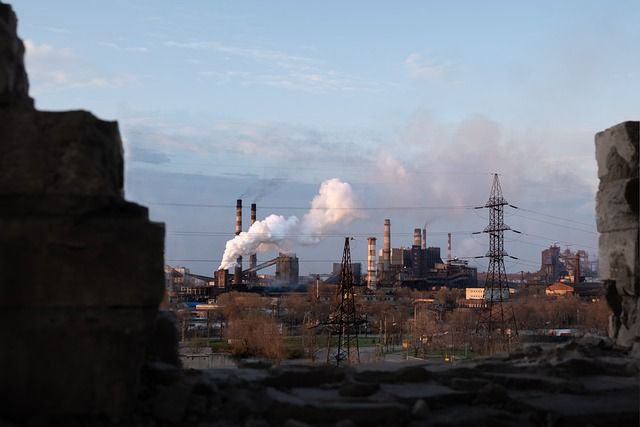What are Volatile Organic Compounds (VOCs)?

The atmosphere of a modern metropolis and its suburbs contains a huge number of natural pollutants - carbon monoxide, nitrogen oxides, ozone, as well as anthropogenic toxic chemical pollutants (such as phenol, formaldehyde, styrene, benzaldehyde), the amount of which tens of tons (times would be for length and the article indicated it was about numbers/quantity) exceeds the maximum allowable concentrations.
In fact, all of the above is by no means a complete list of what we breathe on the streets of megalopolises. But even in small doses, these substances can cause poisoning. In addition, they react relatively easily with oxygen and other oxidizing agents to form even more dangerous pollutants.
What are VOCs and why are they dangerous?
According to a study, in housing areas, especially those near highways, the concentration of carbon monoxide and nitrogen oxides exceeds the maximum permissible concentration by 10-15 times. This means that in our homes and offices the concentration of these substances exceeds the norm by 100 times. Once in an enclosed space, pollutants "accumulate", so that their concentration indoors can be higher than outdoors. Perhaps it is worth dispelling the myth about "saving glazing". No, nobody has ever managed to hide from the air he breathes. And in megapolises, pure air simply has nowhere to go.
In an apartment or office, we meet our own sources of air pollution. Modern furniture is made of plywood, particleboard, and fiberboard. These materials use phenol-formaldehyde resin as a binder. Over time, it decomposes into phenol and formaldehyde, both of which are poisonous to humans and are carcinogens. Tobacco smoke also does not improve air quality; it contains about 5,000 organic compounds, many of which are carcinogenic and mutagenic. Scientists have proven that harmful substances can be detected in a room even after one month of smoking a cigarette in it.
If you analyze the air in a city apartment or office, you can find about 40 thousand volatile organic compounds. It is not so important where they came from: from the street or formed in the room itself - what is important is that we have to breathe these "additives" every day, and this is very harmful to our health.
How do I reduce the levels of VOCs in my home?
It is most effective to get rid of items and materials that emit VOCs. If most of them emit VOCs in a short period of time, they will continue to pollute the air.

To reduce the impact of VOCs, you need to:
- Establish control over VOC sources
Reduce or completely remove items that emit VOCs from the room. Buy items that can emit VOCs that you are sure are safe and follow the instructions on the package. Remove chemicals you don't use from your home since some can leak VOCs into the room air during storage even in closed containers.
-
Control the climate and allow fresh air into the room
You can improve ventilation in the room by opening doors and windows, and use a fan to increase the amount of fresh air. Keep the temperature and humidity as low as possible. Warm temperatures and high humidity produce more VOCs.
If at all possible, it is best to make repairs when no one is in the room or when good ventilation can be provided.
So, the most effective way to normalize VOC levels in the air of a home is to reduce the number of potential sources of VOCs and increase the amount of fresh air in the room.
-
Use air purifiers
To protect your home and office from indoor and outdoor pollutants, air purification systems are used to take the "dirty" outdoor air, remove all impurities from it and bring it into the room already purified, thus creating a comfortable and safe indoor air environment.
Actually, the main indicator of the purifier's performance is the quality of air purification. Unfortunately, it is impossible to invent a filter that would remove all harmful impurities. For example, HEPA filters are excellent against mechanical particles of the smallest size, but cannot do anything about gaseous compounds. That's why purifiers use a multi-stage filtration system.
But air quality cannot be assessed visually or tactilely - only with special sensors. Simple purifiers don't have them - you can turn them on, turn them off, adjust the fan speed, but it's all manual. More expensive devices control the quality automatically, on the basis of which they choose the optimal speed of operation.